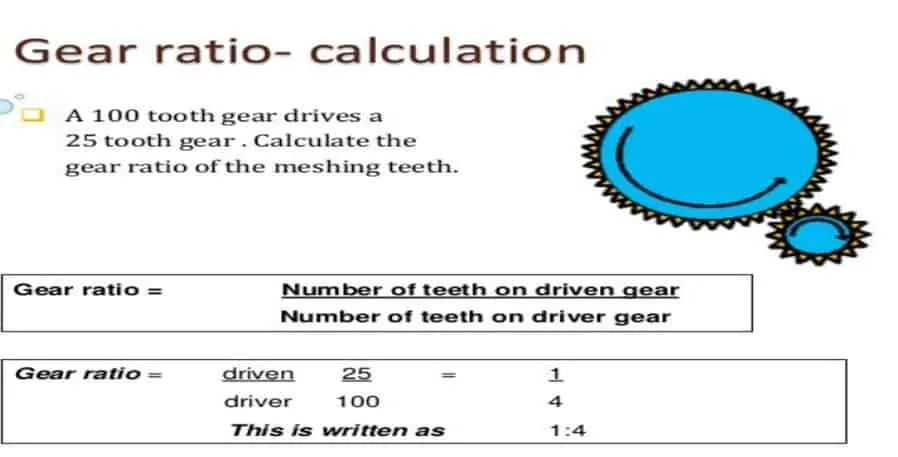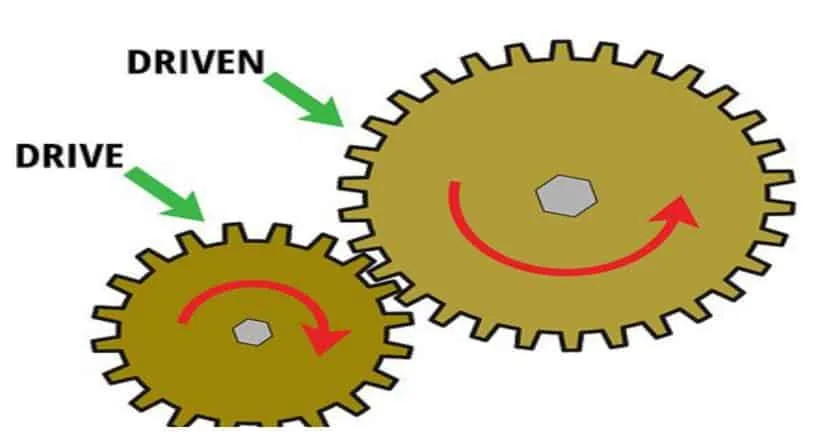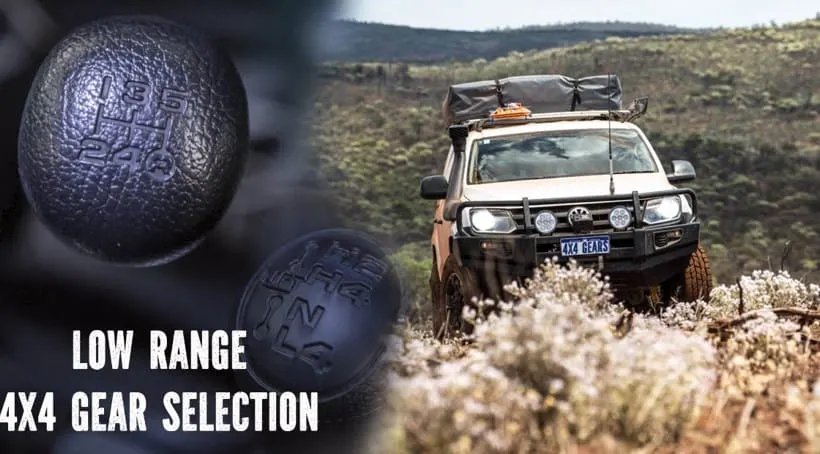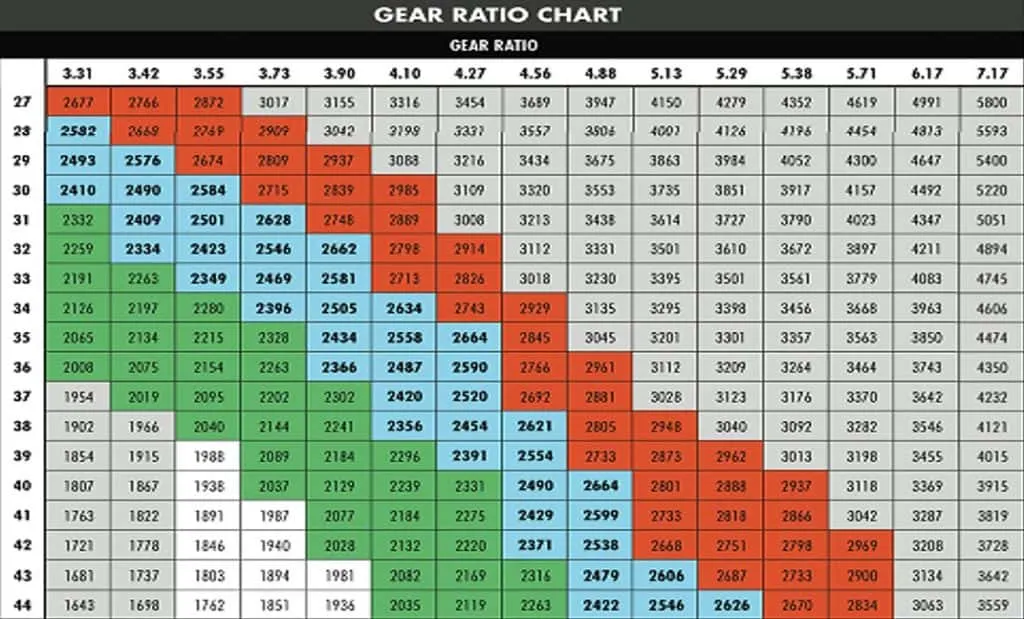If you are unaware of the term gear ration, this article will expound on the meaning of gear ration. Many off-road enthusiasts are concerned about it, and they want to understand every aspect of this term. But the main question is about the gear ratio. What do gear ratios mean in off-roading?
Gear ratio refers to the ratio between axle and driver shaft. It is also defined as the ratio of the number of rotations the axle makes to the number of rotations the driver shaft makes. Gear ratios are available between 4.88 and 5.13 and you need to choose the lower gear ratio for off-roading.
The concept of gear ratio becomes more important when it comes to off-roading. Off-roading is not a simple activity; you cannot do that properly by adopting a casual approach. If you plan to have a successful campaign, you cannot ignore any aspect of this activity.
If you are thinking you can ace it by only buying the vehicle and loading it with different equipment, you are wrong. This article will analyze the different aspects of gear ratio and its importance for off-roading.
Suitable Gear Ratio for Off-Roading:

Driven Gear will rotate at the speed of driving gear if you set the gear ratio at 1:1. The gear ratio of the off-road vehicle is controlled by the number of teeth on the ring vs. the pinion. You should have an idea about the gear ratio of 4.56.
This gear ratio depicts that the driveshaft turns 4.56 when the axle turns one whole circle. You should understand that the higher the number goes, the lower the ratio comes out. The formula for the gear ratio is given below:

Drivability and economy depend upon the suitable gear ratio of your off-road vehicle. You should not increase the tire size without adjusting the gear ratio. Increasing the tire size without adjusting the gear ratio will augment the fuel consumption, and you have to bear the loss.
Check Out: Can 2WD Go Off-Road? Understand the Dynamicity
Factors Affecting the Gearing of Off-Road Vehicle:

You are required to understand the concept of gearing. You cannot understand different associated factors without understanding the essence of that term. Gearing is all about the provision of power from the engine of your off-road vehicle to the ground.
Your vehicle can not run without this gearing factor. You should understand the dynamics of low gearing and high gearing.
In the low Gear, you can drive your vehicle through hill slopes and other higher places, and on the other hand, high Gear refers to the situation in which you can drive your vehicle through the flat ground by consuming less power.
As far as off-road vehicles are concerned, these vehicles are more complex than normal vehicles. Several different parts augment power from the engine to the ground. You should be aware of the components that can affect the gearing of your off-road vehicles. Those components are delineated as follows:
- Diameter of tire
- Transfer case
- The transmission
- Differentials
All of these components work together and impart an immense impact on your vehicle performance. You can increase the performance of your vehicle by understanding these factors and their working.
When the performance of your vehicle increases, it directly provides you comfort during driving. But there is no fixed answer as far as the gearing of your vehicle is concerned as it depends upon the many factors.
But you can adjust the gearing of your vehicle by finding the sweet spot. When you shift gears of your off-road vehicle, this process imparts power to your vehicle, and it can surpass every obstacle during an off-road trip with ease.
After finding the sweet spot then you can rotate the numbers at your convenience.
Gear Ranges of Off-Road Vehicles:

Off-road vehicles are not available in fixed ranges; there are several ranges available to you. If you are willing to buy off-road vehicles, you should know the Gear ranges of different off-road vehicles as they are available in different options.
You cannot understand these critical terms if you have no interest or passion for off-road vehicles. Only off-road enthusiasts can analyze these factors in a better way.
This chapter will analyze the different available gear ranges and their impacts on off-road vehicles. After skimming through this section, you will get an idea about these terms, and you can implement this understanding to augment your vehicle’s performance.
Most off-road vehicles are available in the market with two options as far as gear ranges are concerned. These two options are available in the low range and high range. Both of these ranges have different impacts on the performance of your off-road vehicle.
Read more details on Does Off-Roading Affect Wheel Alignment? Effect and Recovery
Off-Road Drive Ranges:
Off-Road Drive Ranges | Impact | Advantage |
What is 4 High? | This range is suitable for snow roads and roads surfaced with dirt.
| This range reduce the risk of slipping of your off-road vehicle while passing through muddy areas.
|
What is 4 Low? | This range is not suitable for snow roads but the main function of this range is to provide the great amount of toque. | The main advantage associated with this range is the provision of maximum torque to tackle spinning situation or moving out through muddy areas. |
How to Select a Suitable Gear Ratio for Your Off-Road Vehicle?

If you are planning to go off-roading, you should ignore the importance of gearing, which determines the performance of your off-road vehicle. You can have a smooth journey if you select the most suitable gearing ratio for your off-road vehicle.
Other factors such as horsepower of the engine and torque cannot be neglected as they are important for the proper functioning of your vehicle. Still, the provision of power from the engine to the ground depends on the gear ratio of your off-road vehicle.
You can tackle the challenges imposed by rougher terrain by selecting the sweet spot of the gearing ratio. Adjusted gearing of your vehicle can make the difference irrespective of the type of off-roading.
As you know, off-roading is not limited to single terrain; it is a broad activity comprised of countless routes. Different types of off-roading require the adjusted gearing ratio of the vehicle; otherwise, you can put yourself in trouble.
The number of ways can select the correct ring and pinion ratio. There are many methods available to find out the right gear ratio but the easiest way to find out this ratio is by lowering the same percentage when you increase the diameter of your vehicle.
You can also pick the right gear ratio by inspecting through charts that help you to select the most suitable gear ratio.
Why Do Off-Road Vehicles Require Gear?
The transmission and axle gear ratio of every off-road vehicle always dictates the final drive ratio of these off-road vehicles. The final drive ratio of the vehicle impacts the fuel economy of your off-road vehicle and the overall performance of your off-road vehicle.
This final ratio of your vehicle is optimized while manufacturing process for overall vehicle performance and fuel economy. The final drive ratio depends upon the diameter of the wheels of your off-road vehicle.
When you decrease the diameter of the tires of your vehicle, the final drive ratio decreased. You should understand that this decrease in the final drive ratio ultimately reduces the engine’s power to the ground.
When the final drive ratio impacted, it reduced the engine’s overall performance and resulted in sluggish performance. The lower gear ratio always enhances the power of the engine as compared to the higher one.
Importance of Gearing and Torque:
Torque is important for your off-road vehicle while passing through muddy areas. Torque is mainly required to push the vehicle through the mud. Torque can be defined as the product of two different quantities, such as moment arm and force.
By multiplying these two different quantities, we will have the final torque. In some cases, a larger quantity of torque is required, and it can be imparted by doubling the moment arm.
The amount of torque increased by increasing the length of the moment arm. Those engines having larger stroke distances such stroke engines can impart a large quantity of torque.
Importance of Crawl Ratio for Off-Road Vehicles:

This chapter will analyze the aspects of the crawl ratio and its functioning. A crawl ratio can be defined as the torque located at the wheels to torque at your engine’s flywheel. You should understand the actual concept of this term.
This term determines how many times your engine torque is multiplied before setting in a place where actual propulsion takes place. Three components of your off-road vehicle determine the crawl ratio.
These important components include transmission, transfer case, and differentials. After skimming through this section, you will get an idea about the connected functioning of these components.
You should understand the process of power transmission. Power cannot be transferred directly; the first component through which power is transferred is the transmission.
Power will be transferred to the transfer case from the transmission, and finally, it transfers to the differential. You can also find the crawl ratio directly through these formulae as follows:

The crawl ratio of your off-road vehicle can provide you direction about the performance of your off-road vehicle. Still, it did not impart perfect information about the performance of your off-road vehicle in different circumstances.
If you are willing to cross the obstacles without any difficulty, you must adjust a higher crawl ratio to do this task. Your vehicle can tackle the obstacles with a high crawl ratio. You should have an idea about the benefit of a lower crawl ratio.
A lower crawl ratio is suitable for normal driving, but if you are willing to go off-road, you should go with the higher crawl ratio.
Impact of Tires:
Tires are the most important component of your off-road vehicle. Tires are the components that determine the fate of your off-road journey. You should be very careful in the selection of tires for your off-road vehicle.
As far as the crawl ratio is concerned, tires do not impart any impact on the crawl ratio of your off-road vehicle, but these parameters can impact the performance of your off-road vehicle.
If you are willing to get more traction and clearance for your vehicle, you can go for larger tires. Larger tires have the potential to impart more traction and clearance that enhance the performance of your vehicle.
Large vehicle tires can not be turned easily; they required a large quantity of force to turn the axle. The Axle shaft cannot turn the tires unless your vehicle is geared low. When your vehicle is geared low, it transfers more torque to the tires.
What Gear Ratio Is The Best for 33-Inch Tires?
4.56 is the best gear ratio for 33-inch tires of your off-road vehicle. If the tires of this diameter are adjusted to the instructed gear ratio, it will augment the performance of your off-road vehicle.
At this gear ratio, the tires of your vehicle perform efficiently and run through terrains flawlessly. By the increase of tires performance of your vehicle, mileage of your off-road vehicle increased directly.
You should understand the importance of a taller gear ratio as it imparts higher top speed and higher fuel economy.
Impact of Lower Gear Ratio than Recommended on Your Vehicle:
The gearing ratio available for your vehicle always varies from vehicle to vehicle. It depends upon many factors and the way your vehicle performs during an off-road journey. There will be a need to match the gear and axle ratios if your vehicle takes much time while driving on long open highways.
This process can enhance engine longevity and engine performance. You can go with a slightly deeper ratio than recommended if your vehicle spends a lot of time in the mud and commuting around town.
A deeper axle ratio than the recommended one will affect your vehicle in many ways. Driving that vehicle with a deeper axle ratio on an open road will increase the rpm on an open road.
Can You Change The Gear Ratio of Your Off-Road Vehicle?
You are allowed to change the gear ratio of your off-road vehicle. The process of changing the gear ratio of your vehicle is rather easy; you can simply do this process. Most off-road vehicle owners have gone through the transition of gearing ratio of their vehicles.
Off-road vehicle owners have changed the gear ratio of their off-road vehicles from 3.21 to 3.93, and they can achieve this quite easily.
You should have an idea about the cost of this process. Most people can change the gearing ratio by taking their vehicle to shop and spend money to do this task.
You can also change gears at the rear end, and it would cost up to 200 and 400 USD.
Conclusion:
The gearing ratio of the vehicle is very important for the overall performance of your vehicle. Off-road vehicle depends on exact gearing ratio to tackle the different situations during the off-road journey. You should select the suitable gearing ratio to augment your vehicle performance according to the type of off-roading you want to pursue.
Also Read:
How to Carry Bike on Car When Off-Roading? Picks for You
Is Off-Roading Bad for Your Truck? Problems and Recovery
Frequently Asked Questions (FAQs):
Are 4.10 gears good for off-road?
The gear ratio of your off-road vehicle can be the decisive factor in determining the fate of your off-road journey. The Gear, as mentioned above ratio will accelerate and decelerate quicker on the lift.
The gear ratio of your off-road vehicle determines the functioning and overall performance of your off-road vehicle. The Gear mentioned above ratio will impart greater fuel consumption and higher engine speed per given road speed.
This gear ratio will feel quicker as compared to the other gear ratios. The efficiency of this gearing ratio also depends upon the driving. Suppose you’re 85% highway driving over 60 mph. But if you’re mostly driving in town, it will impart poor fuel consumption.
When the gearing ratio of your vehicle turns to 4.10 from any other gear ratio, it will impact the mileage of your vehicle as the engine will turn more times to rotate the rear wheels once.
Do bigger tires change the gear ratio?
The final drive ratio of your vehicle can be changed by using the bigger tires during off-roading. Bigger tires will alter the final drive ratio of your off-road vehicle. You should also have an idea about the impacts of bigger tires on the engine’s performance of your off-road vehicle.
The engine is the main component of your vehicle that will impart power to the ground. The performance of your vehicle depends upon the type of engine. While using bigger tires affects your vehicle’s performance by decreasing the power of the engine to the ground.
You will get to see the explicit change in the power capacity of the engine by using bigger tires. The engine of your vehicle can also be taxed through added weight and resistance through the wind.
Does gear ratio affect horsepower?
The gear ratio of your off-road vehicle cannot affect the horsepower. The performance of your off-road vehicle depends on the provision of horsepower.
Horsepower of the vehicle indicates the capacity of your vehicle to tackle challenges imposed by the off-road journey. But the gearing ratio of your off-road vehicle has nothing to do with the horsepower of your off-road vehicle.
Torque is another important factor that determines the functioning of your off-roading vehicle while passing through muddy areas. Torque provides extra spin to the vehicle and pulls it out of the mud.
The gearing ratio of your vehicle can affect the torque of your off-road vehicle, and this impact can be of great extent, so torque is hard to compare across vehicles.
Will bigger tires mess up the transmission?
Bigger tires of your off-road vehicle can bring positive results and augment your vehicle’s performance in many ways, but they can also bring harmful impacts in many ways.
Bigger tires of your off-road vehicle can put extreme strain on the transmission. Bigger tires of your off-road vehicle can mess up the transmission of your vehicle.
But it can also increase the amount of torque required to tackle the off-road challenges.

This is Surya. I am an experienced off-roader. I have been off-roading for many years across several terrains. I am passionate about 4×4 driving and want to share my knowledge and experience with others.
My goal is to provide you with the most comprehensive and unbiased information about off-roading.
I curated this article through my personal experience and expertise, and I hope it helps you with what you are looking for.

 (+91)9123743026
(+91)9123743026
 24/1 Nibedita Sarani. M.B. Road, Kolkata- 700051, India
24/1 Nibedita Sarani. M.B. Road, Kolkata- 700051, India
Top 20 Off-Road SUVs in 2022- Everything You Need to Know – Offroadhandbook
Friday 14th of January 2022
[…] Get Details On What Do Gear Ratios Mean in Off-Roading? Everything You Want […]
12 Facts That Nobody Told You about Tuk Tuks - A Tuk Tuk
Saturday 8th of January 2022
[…] tuks are called by other names around the world. This type of three-wheeled vehicle is generally called an auto rickshaw. There are many other kinds of auto rickshaws around the […]
How Much Do Off-Road Tires Cost? Regressive Analysis – Offroadhandbook
Wednesday 15th of December 2021
[…] What Do Gear Ratios Mean in Off-Roading? Everything You WantDoes Off-Roading Void Warranty? How to Check Your Vehicle […]
Best Off-Roading Air Compressors- Pros and Cons – Offroadhandbook
Sunday 14th of November 2021
[…] Check Out: What Do Gear Ratios Mean in Off-Roading? Everything You Want […]
Top 20 Off-Road SUVs in 2021- Everything You Need to Know – Offroadhandbook
Saturday 21st of August 2021
[…] Get Details On What Do Gear Ratios Mean in Off-Roading? Everything You Want […]